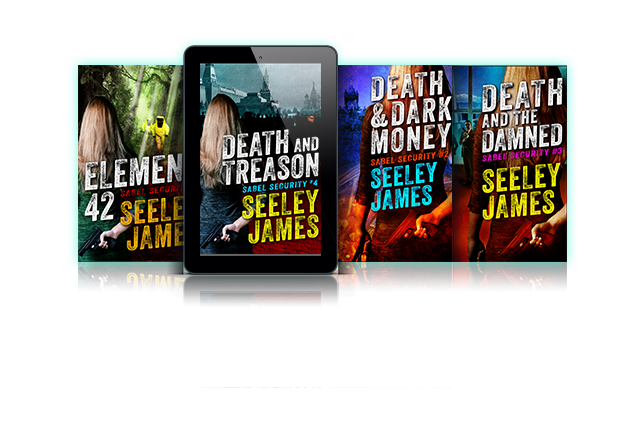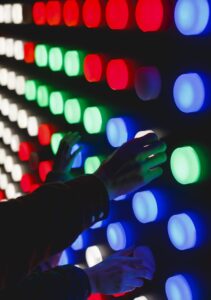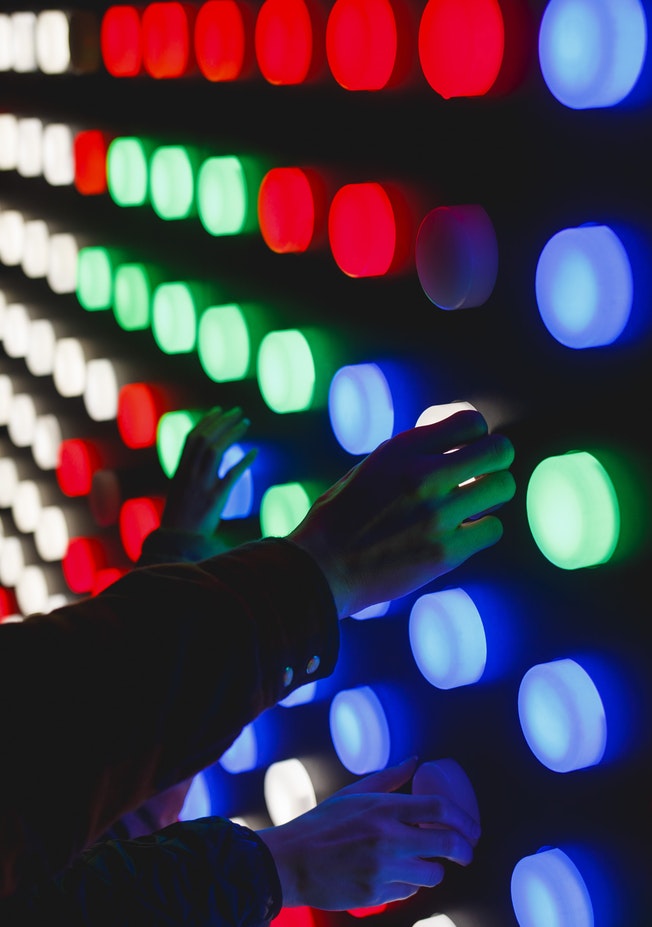
Seeley James, ALLi Professional author member, shares his experience of fine-tuning his ebook prices
One of the many advantages of being an indie author is that with access to your own dashboard on the book distribution sites (KDP, Kobo, iBooks, etc), you can set your own prices for your books, in whatever format you're self-publishing them, and change them until you hit a sweet spot for profitability.
While there are no absolute rights and wrongs, because there are so many variables involved (pricing conventions for your genre, size of the book, whether it's standalone or in a series, etc), ALLi Professional member Seeley James‘s findings on what's worked for him will help you review and revise the prices of your books too.
My careful pricing tests over the past year have shown me that we indies sell our books too cheap. (FWIW, YMMV, Insert any other caveat you can think of here.)
Case Study of Pricing Political Thrillers
I write lengthy (450-530 pg), complex political thrillers with a humorous twist that makes them immersive and unique. I have six novels in a single series out, having produced about one per year (I'm not a rapid-release writer, though there is a market for that.) My books center around three main characters and six supporting characters with most of the emphasis focused on a female athlete and a decorated but possibly insane veteran.

Seeley James describes what worked specifically for his series in a specific genre
How I Experimented with Price Changes
Over the past year, I've moved my book prices as a series and as individual books up and down, sustaining each price point for three to eight weeks each to make sure the run rates were not affected by holidays, elections, smurfs, ad campaigns, etc. My price points were $1 USD increments from $2.99 to $8.99 for individual books and $4.99 to $9.99 for a boxed set.
The Results
Each price change produced a drop or increase in volume for one to two weeks that leveled out by week three. I don’t have any scientific data because all too often I had heart palpitations and pulled the plug before sales evened out. Over the last six months, I’ve gotten a lot better about making six-week investments, but I’ve not bothered to statistically track it. So.
My unscientific but well-reasoned conclusions are:

(Photo by Katya Austin via Unsplash.com)
- I saw no significant sustained difference in sales volume (units sold per week) between the prices of $2.99 and 6.99.
- However, whenever I dropped a price, I saw a small surge in buys. Presumably this is due to readers putting a book on their wish list and buying when they're notified of a drop.
- At $7.99 I saw a sustained 28% drop in volume that was not compensated for in royalties. I believe this to be a bridge too far, at this time. I firmly believe prices are on the rise and I plan to revisit this price point in the fall.
- There is no reason a boxed set of three full-length novels should sell below $8.99. Mine is doing well at $9.99. It was recently repackaged thus restarting the numbers, but initial results show it’s doing better than the earlier version did at $7.99.
- For all price increases, there was a drop in unit sales that was significant on day one (30-60%), but recovered by day five in terms of royalty and returned to previous unit sales volumes in about two weeks. In other words, if you change your price, don’t look at sales volume for the first two weeks. Then when you compare to previous weeks/months, don’t include those transition weeks.
- My most recent conclusion was that my books brought in the same amount of royalty at $6.99 as they did at $5.99. For several weeks, this led me to believe I was better off at the higher price point and could afford a higher ad budget. After a round of ads didn’t produce higher unit sales, I dropped back to $5.99. My analysis: the ad campaign was dated. I plan to reassess my ad strategy and go back to $6.99 in June.
Conclusions for Me
Note that genres and story types have different reader/buyer expectations, but for my books, I've fixed $5.99 as the price point for individual books, including the First-In-Series (which is also my reader magnet, more about that later). I’m keeping my boxed set at $9.99 (three books, 1,000 pages) which represents 40% off individual prices.
Conclusions about Reader Perception
(What readers perceive when they see your price)
- Free-$3.99
It’s just like the other 12,000 books that I’ve collected on my Kindle but never read. - $4.99
Easy-reading, rapid-release author, professionally produced running about 150-300 pages - $5.99
Mid-market, exciting read, unique, professional produced running about 270-450 pages - $6.99
Very unique, exceptionally produced, epic series, running from 350-550 pages - $7.99 and up
Epic or immersive world, multi-plot (Gabaldon, GRR Martin, Rowling), extremely well produced and completely unique, not a knock-off, running 350-800 pages
A Note on Advertising
Please note that the more you charge for your book, the more you can spend on advertising. 98% of my spending goes to Facebook and Amazon ads. I'd spend a big chunk on BookBub Features but BB isn’t interested in me as much since I stopped doing free. I sporadically spend on BookBub Display ads but those exhaust their target markets within a week (probably due to me saturating that ad space two years ago for a solid 18 months).
An Aside about Free Reader Magnets
My sketchy analysis tells me that my first-in-series free-with-subscription produces fewer follow-on sales than selling my first book at $5.99 via FB and Amazon ads. I believe this strange effect is because we indies have flooded the freebie market to an annoying and self-defeating degree.
My reader-magnet newsletter sign-ups have a 30% drop-off rate and a remarkably low open rate (23% last call). My back-of-book links in sold books show 32% connections back to Amazon. That tells me, I’m better off selling a book than giving it away. However, because we’ve trained our Pavlovian readers to expect one, I’m still offering it. Feel free to discuss — with someone else.
However, I believe my thirty years in sales and marketing prior to becoming a writer might inform the freebie phenomenon: people ascribe value to products. If they get it free, it ceases to have value and they might not ever read it. If they pay for it, they will read it to avoid thinking they've wasted money. Add to that the endless oceans of freebies available and it's a wonder anyone can even find your book in their freebie TBR pile.
I hope this helps you in some way. Before you risk the family income on my pricing model, remember, I’m not as smart as I look, so do your own testing.
OVER TO YOU Does your experience chime with Seeley's or contradict it? If you'd like to share your experience of experimenting with ebook pricing, we'd love to hear about it!
#Indieauthors - can experimenting with your #ebook pricing boost your royalties? Read @SeeleyJamesAuth's case study of what worked for him to get you started... Share on XOTHER USEFUL POSTS ABOUT PRICING STRATEGY
From the ALLi Author Advice Center Archive





I love reading every article I can to market what I writer as I try to become a better writer.
As a disabled writer, I don’t have a spare $ to hand Amazon.
With $1 Billion dollars in their bank account, I don’t think they miss what I could pay with no guarantee of one order.
Advertising is what it is, “A roll of the dice and the luck of the draw.”
All a writer can do is write his best book, create the best book cover, offer the reader a great “About the book part to “Entice the buyer to want more, give the reader a great story and make them feel satisfied and to want to buy another book from that author, and of course, have a price that fits a buyers budget for new books to read.
Very interesting. I’m still finding that the permafree first in series works for me, especially when I get a BookBub–I get a really good couple of months from sell-through (massive ROI), a ton of good reviews from happy readers, a surge in BookBub followers, and lots of signups for my newsletter. I have a lot of older “whale readers” on a low budget, so I regularly drop the other series titles to 99c so that they can buy them. This has NOT lowered my income–in fact the more I discount the more I earn. I discount for about 10 days with ads in the middle of that period.
I don’t use the lead magnet strategy as I want everyone on my newsletter to be people who’ve signed up because they love my writing and not because they got a free book (I do offer a free short story, but they’ve already read one of my books by the time they sign up). I get 2-3 signups a day so my list grows steadily.
I have a new first in series that I don’t intend to offer for free for a very long time, but I do experiment with its pricing. In my niche (historical mystery) the top 20 are dominated by discounted books, so pricing at $4.99 (my standard price) keeps me out of that first page on Amazon but still makes me a good enough profit that it’s worth doing. Also, the $4.99 price point makes a drop to $0.99 much more enticing–and then I can put it up to $2.99 for a bit to get the best of both worlds, top 20 placement AND a decent profit.
I recommend using a marketing calendar (any handwritten or electronic form you prefer) to keep track of all this and to plan ahead. I’m usually too busy to do much analysis on the fly but I do track overall sales daily and can see the correlation between strategies and sales.
I absolutely believe that “freebie” books are not as respected or valued by their audience. While I can understand the principle of a “loss-leader” in a series (which, after all, is a well-established marketing ploy), I think authors are undervaluing their work if they price at zero. I intend to publish a one-off YA novel later in the year. There will be no point in pricing this at zero, because there will be no follow-up books, so I intend to experiment with pricing and marketing to learn exactly what works.
Very interesting and scientific, thanks Seeley. My own gradual increase in price from .99 to £3.99 for full length genre novels has shown the same, I think, although I haven’t analysed the data. Even some readers were saying that the books were too cheap.
The latest pre-sale title was my first at £3.99 and it made top 3 in genre and top 1,000 Amazon. It’s heading for very similar numbers to previous, cheaper titles.
Readers were also asking for paperbacks and CreateSpace prices would be high by the time the reader got the book – again, they said no problem.
Anecdotes from Kindle reading relatives and friends include:
“I never buy anything over .99p”
“I wouldn’t bother with a free book”
“£8.99 for an ebook is too much”
Like you, I do not give books away – other than to genuine reviewers, my proof readers or relatives.. never done a free promotion for any of the paid titles and I’m not feeling the pain. I have one book of short stories on permanent free, but that’s it.
Fascinating article. I’ve experimented a little myself, and decided early on not to make the first of my series free for precisely the same reason – I always read books I paid for before the freebies (meaning there are dozens of them languishing on my Kindle). However, I don’t quite have the nerve to raise the price to $4.99 or $5.99…yet. I want to get a few more books out there first. Great to hear a dissenting voice on pricing, thanks for sharing your results, Seeley.